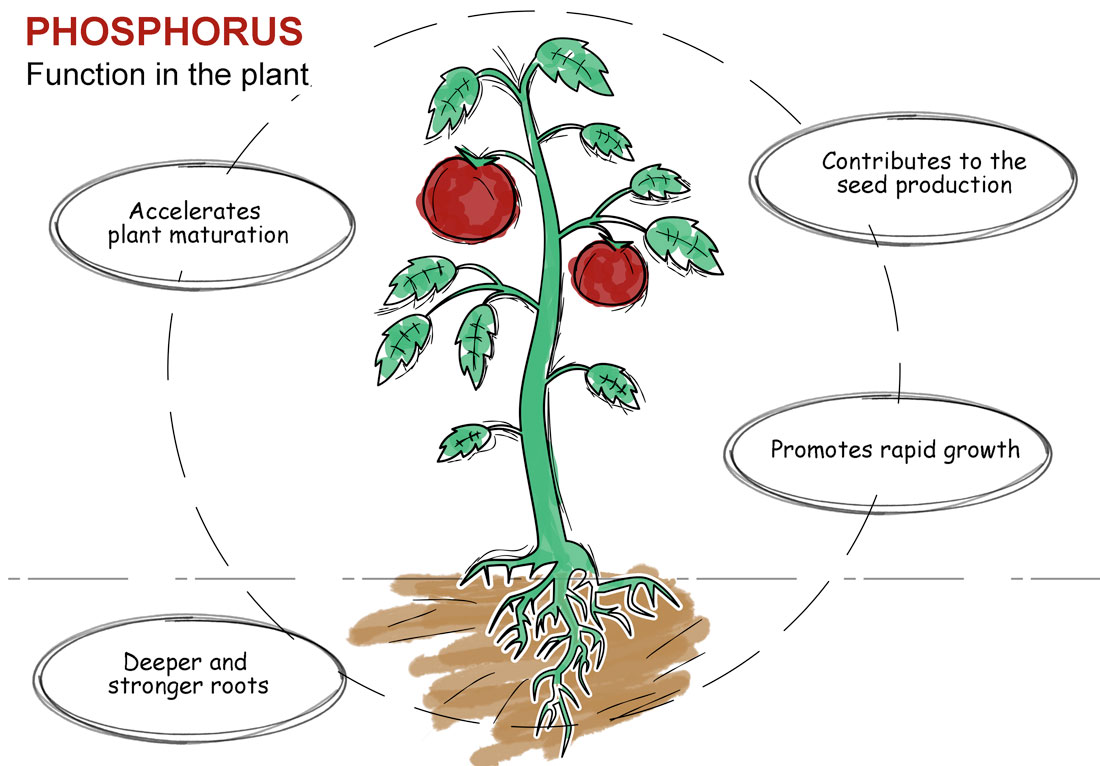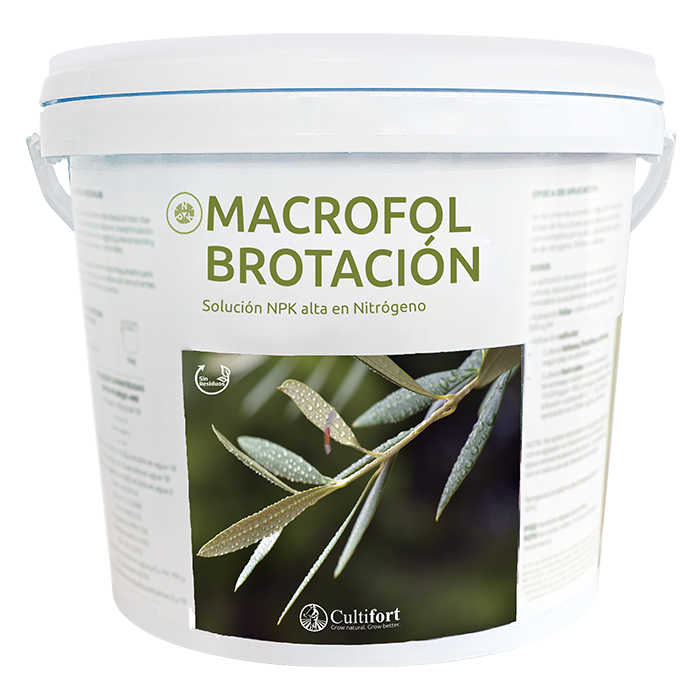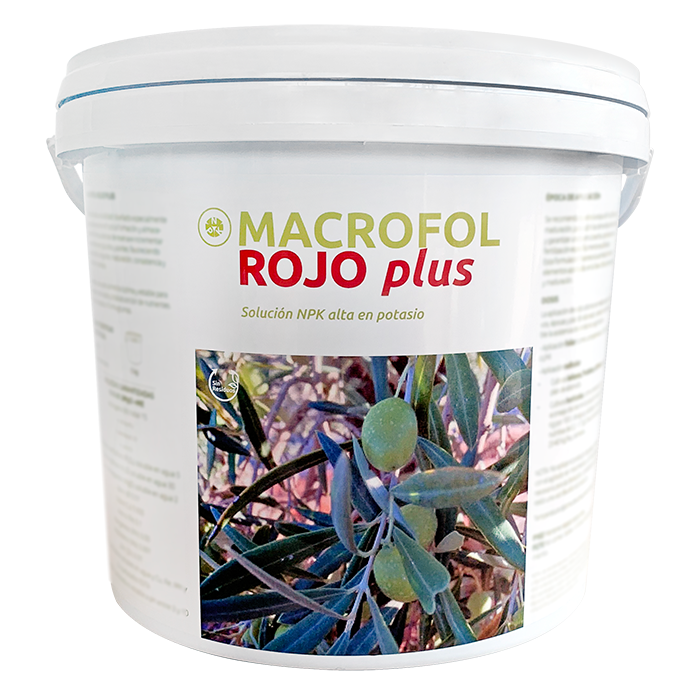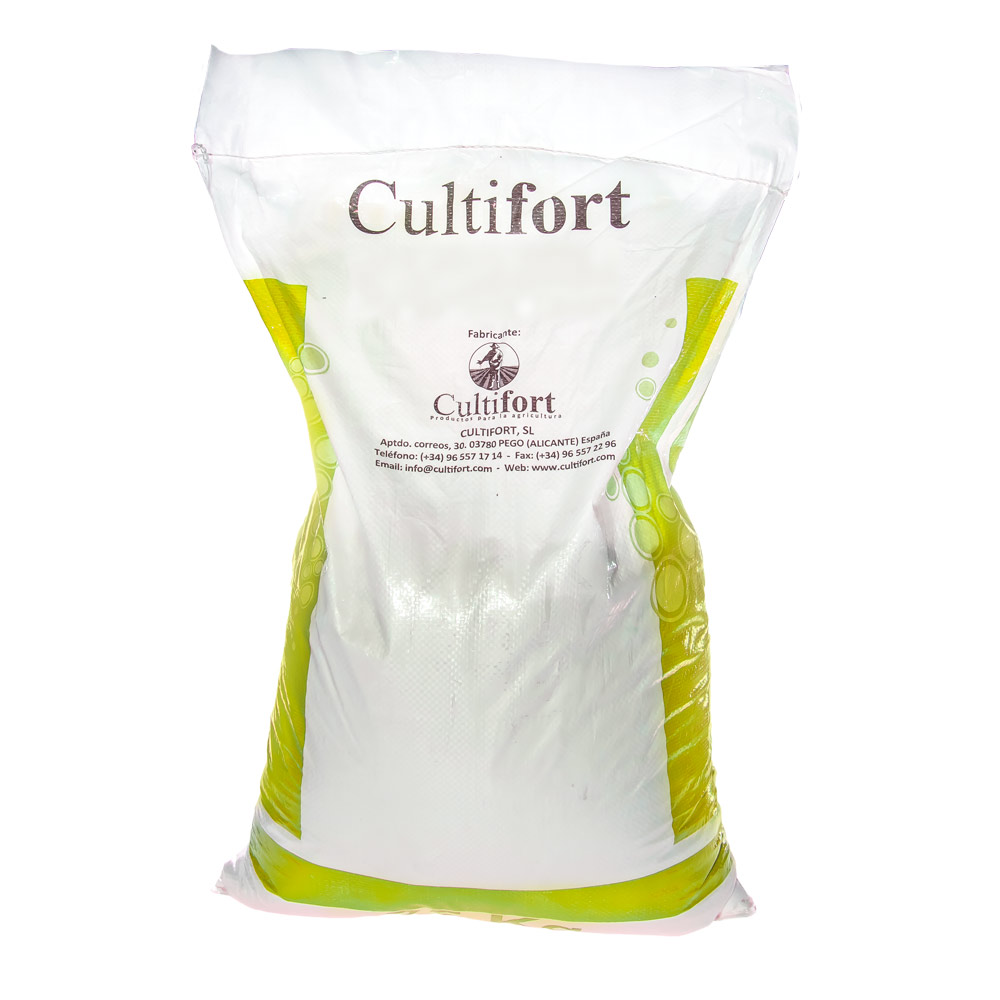P
Phosphorus (P2O5)
Phosphorus
Phosphorus is an essential element of the genetic material by having a structural role in the diester bonds present in the DNA and RNA nucleic acids. Therefore, Phosphorus is especially necessary when there is a large number of dividing cells in the plant, since in each division, the genetic material is duplicated.
Phosphorus plays a key role in energy metabolism, in photosynthesis and in breathing, by forming energy-rich anhydrous bonds in ATP or ADP molecules.
It is also an important part of phospholipids, essential in the activation of enzymes and in the structure of the cell membrane.
ABSORPTION
Phosphorus can be absorbed by roots and leaves, with root absorption being the most common in nature. P is preferably absorbed as H2PO4- in soils with a pH below 7, and as HPO4-2 in basic soils, with a pH above 7.
Mycorrhizae, a symbiotic association between soil fungi and plant roots, allows the absorption of phosphorus from the soil.
When suffering from phosphorus deficiencies, the plant mobilizes it from one organ to another, accumulating in flowers, developing seeds and young leaves; Consequently, the first symptoms appear on old leaves. These symptoms consist of a blackish-brown coloration on the upper leaves or purple coloration on the underside of the leaf, thus darkening the entire leaf. As P deficiency progresses, plant growth is severely reduced.
EXCESS
Unlike nitrogen, excess phosphorus causes a great root development of the plant in relation to the aerial part, which translates into a low aerial-root ratio.
CULTIFORT PRODUCTS FOR THE LACK OF FÓSFORO











